Table of Contents
- Editor’s Choice
- Internet of Things Statistics – by Market
- Internet of Things Adoption Statistics
- Best Artificial Intelligence Software
- Internet of Things Big Acquisition Statistics
- Internet of Things Challenges Statistics
- Internet of Things Benefits and Statistics
- Internet of Things Spending Statistics
- Conclusion
- FAQ’s
Internet of Things Statistics: The Internet of Things (IoT) is a collection of physical devices interconnected with appliances, vehicles, and other items that are infused with sensors, programs, and network connectivity that allows the exchange and collection of information.
These devices, commonly referred to as “smart” technology, can communicate with one another and with humans via the internet.
The IoT is based on the notion of connecting ordinary things to the web and allowing them to be monitored remotely and controlled.
They can also be communicated with. The objects could be anything from basic household items such as lighting and thermostats to more sophisticated systems such as factories and intelligent urban infrastructure.
Editor’s Choice
- The Global IoT Device Management Market size is expected to be worth around USD 45 Billion by 2033, from USD 2.8 Billion in 2023, growing at a CAGR of 32.0% during the forecast period from 2024 to 2033.
- There are over 13 billion IoT devices connected IoT devices across the globe.
- It’s predicted that at least 25.4 billion IoT devices by 2030.
- IoT devices overcame non-IoT devices by 2020.
- There are over 400 operational IoT platforms that are in existence.
- Video entertainment is the largest segment of spending in IoT.
- More than 10% of VC funding is related to IoT.
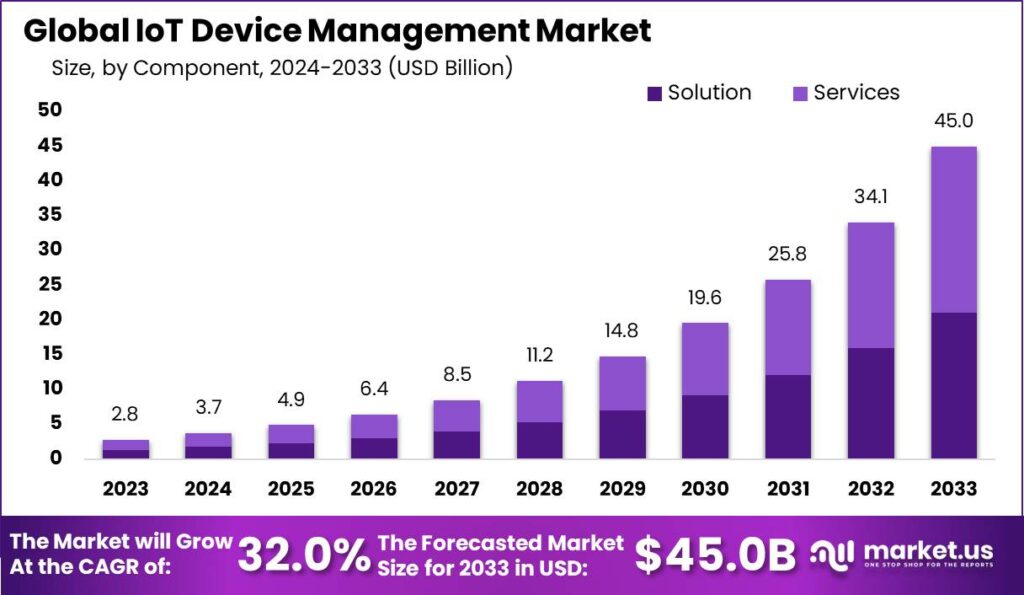
Internet of Things Statistics – by Market
Many research institutions and organizations carried out extensive studies to precisely assess how much is the IoT market.
The results are varied however, they all have one thing in common – the figures always show a shocking quantity. This set of IoT market statistics gives an excellent insight into how busy this sector is.
Internet of Things Excellent Insights
- $381 billion, the estimated worldwide IoT revenue adjusted to account for the impact of the spread of the pandemic.
- This is less than the estimate that was originally made before the outbreak of the epidemic.
- $906 billion, the estimated 2025 world IoT revenue adjusted for the consequences of the spread of the pandemic.
- $200 billion – that’s the expected 2025 IoT global revenue that will be wiped out due to the pandemic.
- While still lower than the initial figures, the estimates from IDC are starkly different from the figures from GSMA Intelligence:
- $742 billion is the estimated global IoT revenue adjusted to account for the consequences of the spread of the pandemic.
- This is 8.2% lower than the 14.9% growth forecast IDC predicted in November 2019.
- IDC anticipates that worldwide IoT spending to reach double-digit rates by 2021. The goal is to reach the compound annual increase (CAGR) in the range of 11.3% over the period 2020-2024.
- $166 billion – that’s the estimated size of the global market for connected cars in 2025.
- $81.1 billion – estimated global revenues for connected-car services until 2030.
- 76.3 million vehicles – a total of connected vehicle shipments worldwide in 2020.
- $55 billion is the estimated worldwide market worth for the IoT fleet management market in 2026
- 20% and 20% IoT Fleet management CAGR between 2020 and 2026.
- $832 billion, the amount of investment made by companies during the IoT market in 2020.
- $332.67 billion is the estimated global value for the IoT Healthcare market by 2027.
- CAGR of 13.2% of the IoT Healthcare market from 2020 until 2027.
- $5.31 billion – that’s the IoT school market’s value in the year 2019.
- 74%, which is the estimated IoT education CAGR between 2020 and 2027.
(Source: GSMA Intelligence-December 2020, IDC-2020, TechJury-2020, openPR-2020)
Take advantage of our unbeatable offer - buy now!

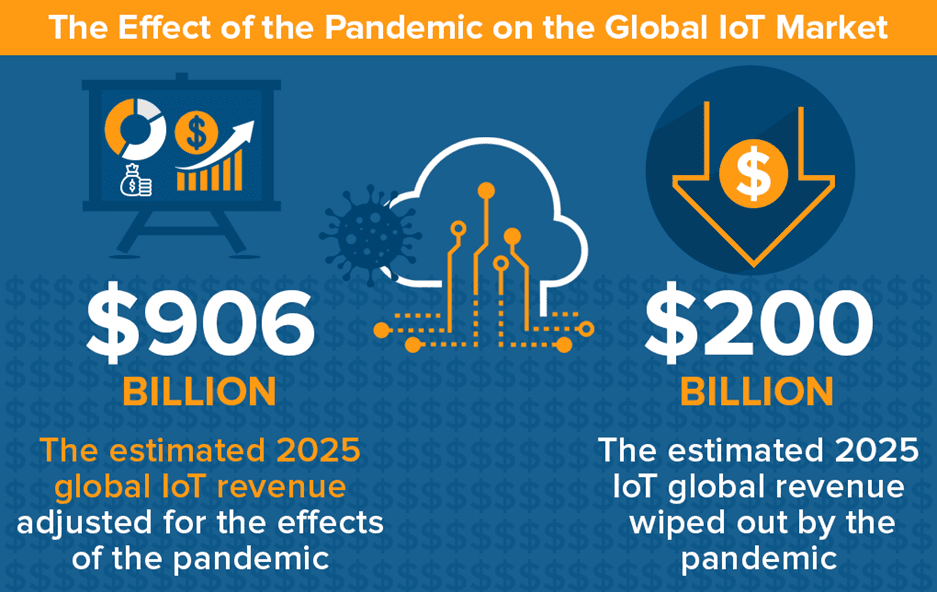
Internet of Things Adoption Statistics
Prospects look promising for this business venture, with the IoT software market expected to experience rapid expansion both short- and long-term, being integrated into nearly all forms of human technology.
IoT is often utilized with tools for artificial intelligence available on the market, enabling researchers to gain more information from complex data through machine learning software as well as predictive analytics.
Therefore, it is vitally important to realize that IoT uses and adoption are increasing at an ever-faster rate, alongside AI use.
Recently we have seen companies adopt IoT for various uses while meeting standards; naturally, this should also bring some degree of success – earning or saving money respectively – As this is how they operate:
- 65% cost savings
- 68% revenue generation
- 53% regulatory compliance was noted in this research study
(Source: GSMA Intelligence-2020)
Beyond that Here’s a list that provides the details of the ways IoT devices will impact various industries.
- Over 60% of companies currently utilize IoT and just 9% have none.
- Of the 21.7 billion connected devices for 2020 11.7 billion (54%) are thought to be IoT connection devices.
- 30 billion is the estimated number of IoT device connections by 2025.
- The figure is the equivalent of 4 IoT gadgets per user, on average.
- $77.3 billion – world industrial IoT market size by 2020.
- $110.6 billion – the global industrial IoT market size in 2025.
- $124 billion was estimated as the global smart city initiative’s investment in 2020.
- $189.5 billion is estimated for the global smart city initiative’s investments in 2020.
- $43 billion – worldwide IoT transport and logistics investment by 2020.
- The number is 840 million. IoT devices by 2020 that utilize cell networks.
- 5.7 billion is the estimated amount of IoT devices that will be connected to cellular networks in 2026.
- $16.8 billion – – the estimated market value in 2026 of IoT security services, which stems from the need for better protection devices connected to IoT.
- 24.4% – The Compound Annual Growth Rate (CAGR) of the smart apparel (IoT-connected) market between 2020 and 2027. The market will reach its peak in 2027. roughly $6.42 billion.
- $53.9 billion – that’s the global connected car market’s value by 2020.
- $166 billion is the estimated global market for connected cars by 2025.
- 28.6% – the market shares of sensors and modules, the top IoT technology category for 2020.
- 21.3% – 2020 market share of the ongoing IoT services.
- 14.2% – the market shares in 2020 of installed IT services and connected IT.
- 11.7% – market share for 2020 for IoT applications software.
(Source: Impact-2020, IoT Analytics-2020, Statista-2020, IDC-2020, Visual Capitalist 2020, Cision-2020/21)
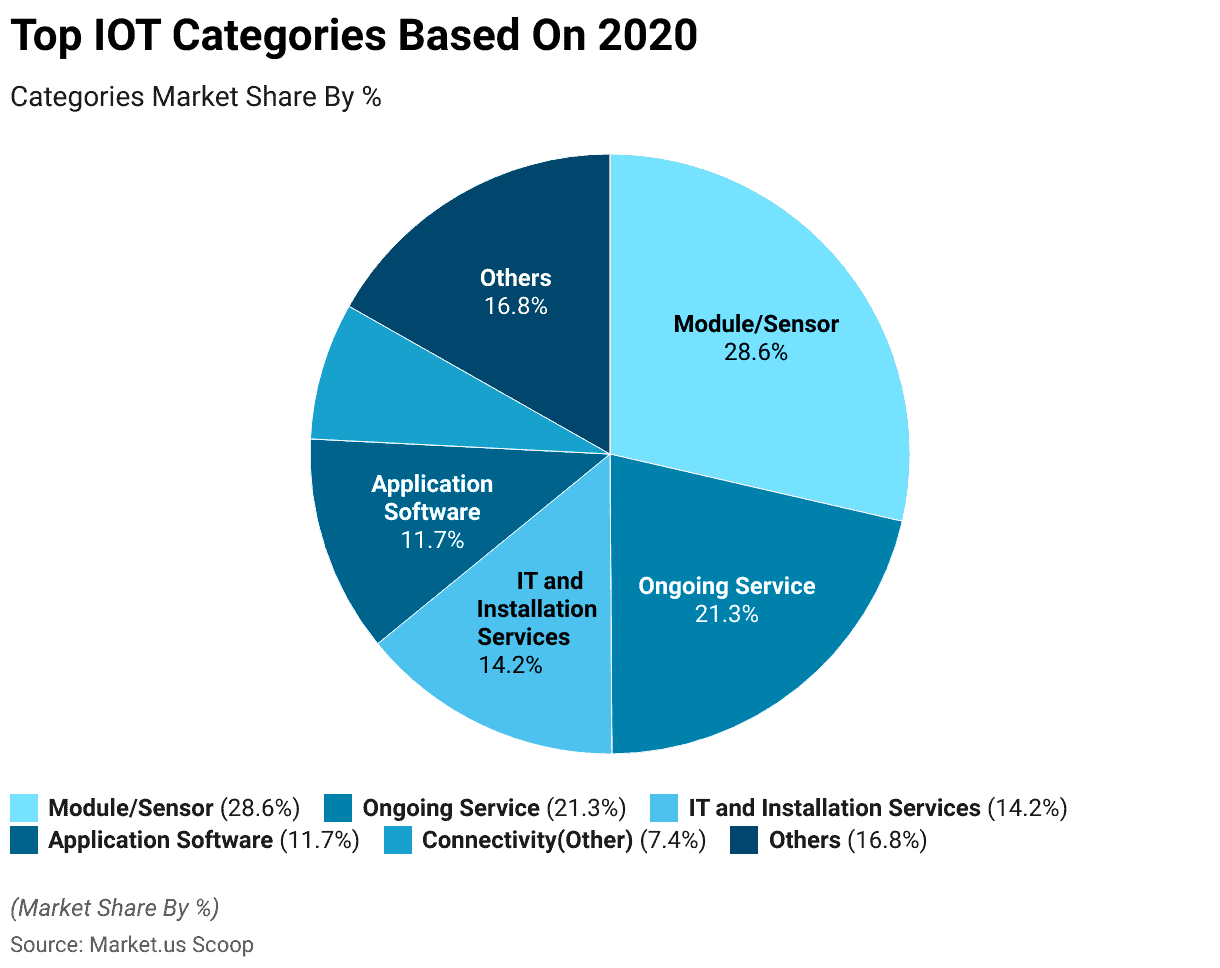
Best Artificial Intelligence Software
- Cloud Machine Learning Engine is a highly effective cloud-based predictive analytics software. It includes features such as Cloud Datalab and Prediction Services to help you understand the meaning of the IoT data, and create predictive models. You can also gain valuable business information.
- Azure Machine Learning Studio is an outstanding machine-learning platform that helps its users develop software for building business intelligence, among other applications. It is a powerful web-based platform for training models, experiment projects, APIs, and more which are accessible via its simple drag-and-drop interface.
- Salesforce Einstein is a highly specialized AI platform devoted to processing sales data. Its modules will assist you in understanding IoT data and then applying the insights and models developed by the program to practical applications to increase your return on investment.
- IBM Watson is a popular AI platform used for exploration and research. It has features such as visually-based recognition a translator for languages and an automatic classifier of natural languages that can be used for a variety of IoT data applications.
- Nvidia’s Deep Learning AI is another popular platform used for AI as well as IoT analysis of data. With powerful features, such as the creation of inferences and testing deep learning-based training as well as AI exploring tools. This helps to generate data from connected devices more easily for analysts.
Internet of Things Big Acquisition Statistics
Studies on IoT markets conducted by various organizations show one thing is certain – the IoT market will only become larger as time progresses, leading many large corporations to invest in this form of technology and buy smaller firms over the past few years; some examples can be seen below.
- Google paid $3.2 billion for NEST in 2018.
- In 2018, Amazon paid $1 billion to acquire Ring.
- In 2016, Softbank paid an all-time high of $32 billion to acquire ARM.
- Cisco paid $1.4 billion in cash to acquire IoT startup company Jasper Technologies in 2016.
- In 2017, Samsung committed $8 billion to the acquisition of the technology for connected cars company.
- 2.4 billion dollars in Verizon’s purchase cost for getting the rights to Fleetmatics, a fleet management company, in 2016. This is the most visible of the telco company’s IoT-related purchases.
(Source: TechCircle, Adweek, SDxCentral, CRN, FleetOwner)
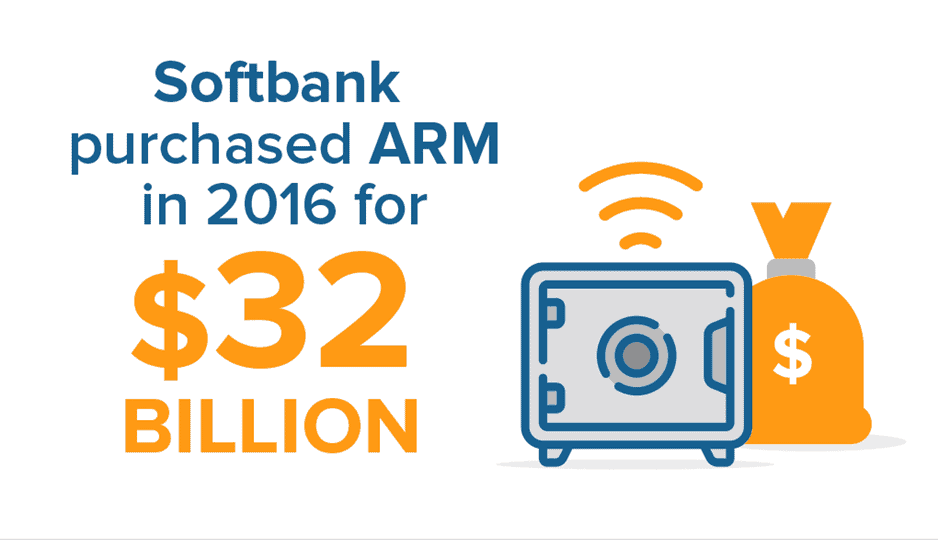
(Source: sdxcentral.com)
Internet of Things Challenges Statistics
Technology of any magnitude faces unique hurdles; humans’ inherent resistance to change is just one.
More IoT information has become available and both proponents and critics of this sector have expressed views about these difficulties, with plenty of data as proof.
Some critical problems that need to be solved before realizing the full benefits that IoT products can bring are:
Where are we with internet connectivity between rural and urban regions today? Here’s the reality of it all:
- International Telecommunication Union 2020 reports that 28% of urban households and 63% of global rural households lack internet access.
- 72% of African urban households and 94% of African rural households lack internet access.
- 26% of Arab states with urban households lack internet access. 62% of rural Arab households without internet access in these same states.
- 30% of Asia and Pacific urban households lack internet access; 64% come from rural households in this regard.
- 19% of CIS urban households and 34% of CIS rural households lack internet access.
- 12% – of European urban households are without internet access; 22% of European rural households lack access.
- 26% of America’s urban households lack internet access. 50% – of rural American homes do not have internet.
- 13% of urban households in developed nations lack internet access; 19% – of developed nations’ rural households also remain without access.
- 35% – Urban homes without access to the Internet in developing nations; 62% of rural homes remain without an Internet connection in developing nations.
- 75% of urban households in least-developed countries do not have internet access whilst 90% or fewer rural households in the developed world have no such connection.
- 54% of landlocked, developing cities have households without Internet access while 86% of people living in landlocked developing countries without rural internet connections are landlocked with rural homes that do not have Internet connectivity.
- 21-162 million Americans without internet access. 14% of the US population still lacks online connectivity.
- At least four incidents involving the theft of personal data occurred for each American in 2019.
(Source: International Telecommunication Union-2020, Pew Charitable Trusts-2020, World Economic Forum 2020, Interest.com-2020)
However, IoT devices face security problems. Here are some of the most important results:
- The majority of all IoT devices’ traffic is not encrypted which exposes personal and private information that is stored in the network.
Internet of Things Statistics – Broken down, these IoT security threats:
- 41% – exploits in the form of:
- 14% – network scan
- 5% – remote code execution
- 5% – command execution
- 5% – buffer overflow
- 5% – others
- 4% – SQL injection
- 3% – zero-day
- 33% – malware in the form of:
- 12% – worm
- 8% – ransomware
- 7% – backdoor trojan
- 6% – botnet
- 26% – user practice in the form of:
- 13% – password
- 8% – phishing
- 5% – crypto jacking
(Source: Threatpost-2020)
In the operating systems that are used, the risks to IoT devices grow the less patch and fixes for the system are available.
Internet of Things Statistics – For desktop environments, the following are the lack of support:
- 83% – no support, including:
- 56% – Win7
- 11% – WinXP
- 7% – Embedded
- 4% – Linux
- 3% – Unix
- 2% – Win (other)
- 17% – active support, including:
- 11% – Win10
- 2% – Embedded
- 2% – Linux
- 2% – Win8.1
(Source: Threatpost-2020)
Internet of Things Statistics – GSMA Intelligence, top challenges around IoT enterprise integration:
- 53% – integrating with existing technology
- 50% – security and data privacy concerns
- 47% – the cost of implementation
- 40% – employee/internal resistance
- 38% – lack of in-house skills
- 27% – unclear ROI
(Source: GSMA Intelligence, 2020)
Although the use of IoT in the healthcare field is well-documented, the industry is also faced with its difficulties. They are mostly within the following fields:
- 89% – IoT-related security breaches
- 49% – malware
- 39% – human error
- 22% – DDos
(Source: Appinventiv-2020)
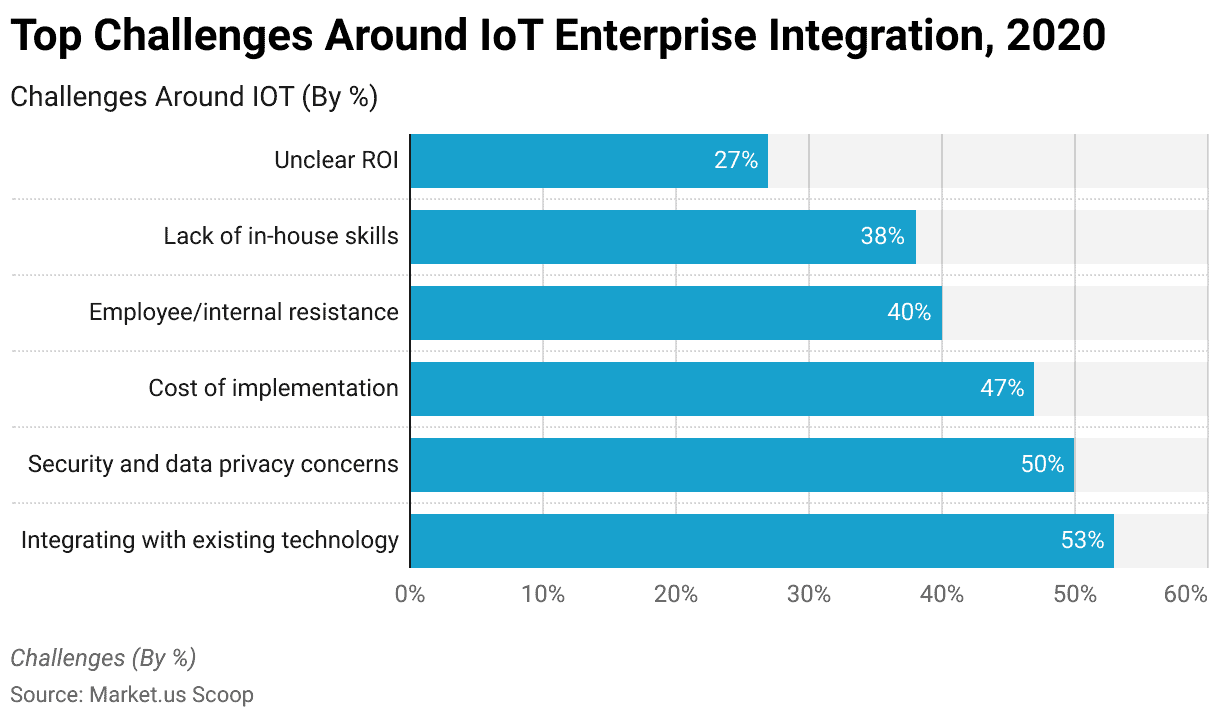
(Source: GSMA Intelligence, 2020)
Internet of Things Benefits and Statistics
Today’s smart technologies go well beyond phones; cities, homes, and cars all benefit from IoT due to its wide variety of uses; just a few include ease of use and life-saving applications.
As such, its market size continues to expand exponentially; here is a collection of figures that show some advantages of this technology.
Internet of Things advantages
- 83% of businesses that have implemented IoT technology report increased efficiency as a result while 49% of decision-makers consider IoT to be an essential change for their businesses and industries.
- 39% of decision-makers consider IoT an enabler of change within their businesses and industries; however, the technology has yet to make its mark.
- 10% of decision-makers believe IoT initiatives will aid but not transform their industry or business. 36% of businesses have begun exploring new directions due to IoT initiatives.
- 40% of customers don’t care if chatbots or real people are assisting as long as their needs are being met.
- About 43% of companies that adopt Internet of Things policies within their organizations have experienced improved business agility through streamlining operations processes.
- 35% savings estimated from smart lighting systems that employ adaptive behavior as opposed to strict predetermined behavior (Escolar, et. al).
- The City of Barcelona saw annual savings from intelligent lighting of $37 Million due to it, not including the 47,000 jobs created as a result. Also in 2021, most retailers will utilize IoT devices and solutions to personalize shopping experiences using SaS models.
- 66% of cities in the US invest in IoT technology for smart cities, which includes smart sensors for traffic management and intelligent meters with Wi-Fi stations.
- 50-50 Estimation for time-to-weight reduction caused by IoT technology usage for healthcare sector applications
- 57% Projection of increased workforce productivity due to IoT in healthcare.
- 36%: Estimates of new business models created within healthcare through IoT.
- 27% Increase in Healthcare Professional-Patient Collaboration Due to IoT. 1/10th Increase in Road Capacity with Intelligent Parking Solutions.
(Source: GSMA Intelligence-2020, Impact-2020, Data-Smart City Solutions, SaS, TechRepublic, Appinventiv-2020, Visual Capitalist 2020)
Internet of Things Benefits Statistics
Estimates of IoT benefits to public safety and crime levels due to IoT-enabled processes like predictive policing, real-time crime mapping, and gunshot detection:
- 8%-10% reduction in incidents.
- Reduced emergency response times by 30-40%.
- Decrease in fatalities by 8-10%.
- Improvement of emergency service arrival time by 10-15%.
- 10% decrease in street crime with IoT street crime monitoring of public safety.
(Source: Visual Capitalist-2020)
Internet of Things Statistics Technological Solutions
Utilizing a variety of technological solutions, intelligent cities can reduce pollution, decrease waste, and conserve as much as 80 liters of water for each person a day.
- 10% – reduction in emissions of gas because of IoT application.
- 20-30% reduction in water consumption due to the utilization of IoT.
- 10% to 20% reduction in waste that is not recycled as a result of IoT implementation.
- 3 to 15% – reduction in the adverse health effects caused by bad air quality.
- 30% reduction in street lighting expenses through smart lighting.
- 20% – reduction in the cost of waste collection with intelligent waste management systems.
(Source: Visual Capitalist-2020)
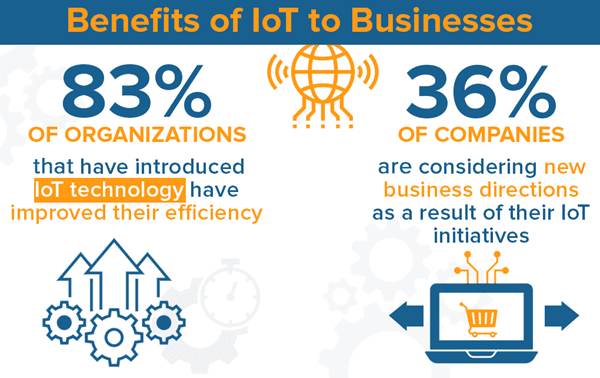
(Source: Impact 2020)
Internet of Things Spending Statistics
- Global investment in IoT through 2020 stands at $742 billion, which represents an 8.2% YoY increase over 2019, which compares to an initial forecast of 14.91%.
- By 2021, worldwide IoT spending is expected to see double-digit increases with an estimated compound annual compounded growth rate of 11.3%.
- Consumer and personal services — which encompass theme parks, hotels casinos hotels, and movie theatres — is the only sector that saw an increase in Internet of Things spending for 2020 (although that figure was down 0.1% year-on-year.
- There will also be an expected growth rate of 4.3% IoT expenditure in the discrete manufacturing sector by 2020 (4.3% growth rate and 5.0% investment growth respectively)
- Finally, there will also be a growth of 5.0% IoT investment growth within the energy and oil industry by 2020 [5.1%].
- In 2020, the growth rate of IoT investment for transportation sector investments reached 5.7%.
- Meanwhile, 11.9% growth was witnessed in IoT spending from education industries.
- 12.3% growth rate of IoT spending in the insurance industry in 2020;
- 14.5% of healthcare IoT expenditure growth is expected for 2020.
- Smart home expenditure for IoT surged 14.4% year-on-year in 2020.
- IoT software continues to be one of the fastest-growing categories of technology in terms of expenditure and growth, experiencing an annual compounded rate of 13.5% over five years, with special attention paid to analytics and applications purchase of software.
- China was the one region that experienced the fastest rate of expansion among the three regions: 13.4% versus 9% for the US and 11.4% for Western Europe.
- 2020 saw IoT expenditure growth at its highest among Middle Eastern and African regions (19% compound annual compound average growth rate), Central Eastern Europe (17.6% compound annual average growth), as well as Latin America (15.8% compound yearly average).
(Source: Help Net Security, 2020)
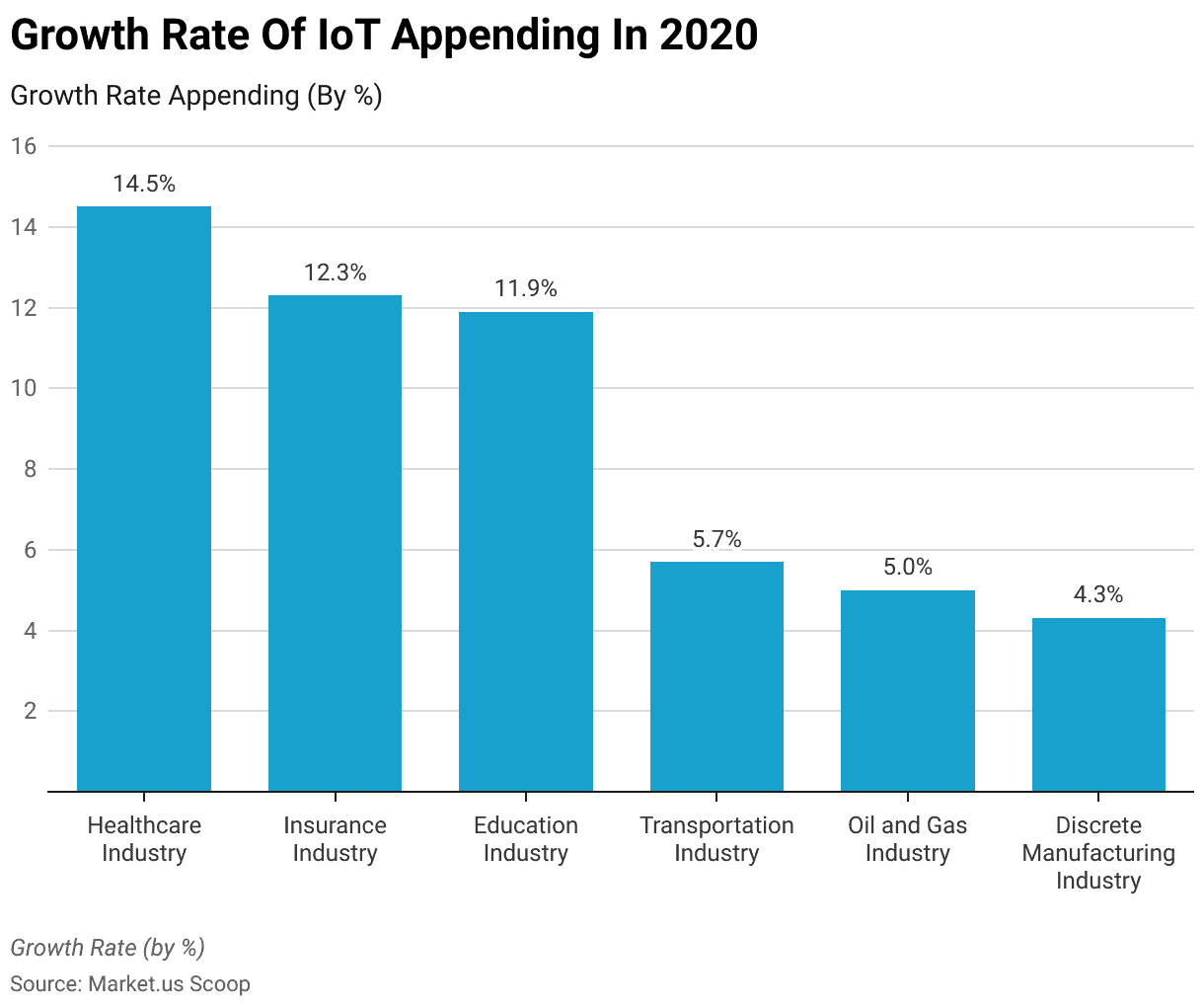
Acquisitions and Mergers:
- Verizon acquired BlueJeans Network, a video conferencing platform, to enhance its IoT portfolio.
- Cisco announced the acquisition of Fluidmesh Networks, a wireless technology company, to strengthen its industrial IoT offerings.
New Product Launches:
- Amazon Web Services (AWS) introduced AWS IoT FleetWise, a new service for managing large fleets of connected devices efficiently.
- Microsoft launched Azure Percept, an end-to-end platform that enables customers to build and manage IoT solutions.
Funding Rounds:
- Particle, an IoT platform provider, raised $40 million in Series C funding led by Qualcomm Ventures to accelerate its product development and expansion.
- Helium, a decentralized wireless network provider for IoT devices, secured $111 million in Series B funding to scale its network infrastructure.
Partnerships and Collaborations:
- IBM partnered with Siemens to integrate IBM’s Maximo Asset Management solution with Siemens’ MindSphere IoT platform for enhanced asset performance management.
- Bosch and Microsoft collaborated to develop a software platform that enables seamless integration of IoT devices with Microsoft Azure.
Investment in Research and Development:
- Companies are allocating significant resources to research and development initiatives aimed at advancing IoT technologies, such as AI-powered analytics, 5G connectivity, and predictive maintenance solutions.
Conclusion
Internet of Things Statistics: In conclusion, the Internet of Things holds immense promise to revolutionize our lives by connecting physical objects and harnessing data for efficiency and innovation.
While IoT poses some obstacles to overcome such as security, privacy, and interoperability issues, its many advantages make it an appealing technology that continues to advance in various industries and find applications within them.
As its use expands further into society’s mainstream consciousness, stakeholders must come together in collaboration and invest in research & development while meeting its associated challenges to truly harness its transformative potential.
FAQ’s
The term ‘Internet of Things (IoT)’ refers to a network of physical objects, devices, vehicles, buildings, and other items equipped with sensors, software, and connectivity capabilities that enable them to collect and exchange data over the Internet.
IoT devices typically consist of sensors to collect data, an interface for connecting with the internet (Wi-Fi, Bluetooth, or cellular networks), and software capable of processing and analyzing this data. They communicate among themselves and with backend systems for monitoring, controlling, or automating various processes.
Examples include smart thermostats, fitness trackers, smartwatches, home security systems, connected appliances, industrial sensors, and vehicle tracking systems – any device capable of connecting to the internet and collecting/exchanging data can form part of IoT. What are some benefits associated with IoT?
However, as with any technology, there can also be obstacles and concerns concerning IoT. Among them may include:
– Security and Privacy Risks: IoT devices may be susceptible to hacking, leading to privacy violations or unauthorized access to sensitive data.
– Interoperability Risks: Different IoT devices often employ various communication protocols which make interoperability challenging.
– As more IoT devices are added, managing and scaling their related infrastructure and data becomes increasingly challenging.
– Data Management: With so much IoT device data generated every second, effective storage, processing, and analysis strategies must be in place to keep up with it all.
– Ethical Considerations: IoT devices’ collection and use of personal data raise ethical considerations related to consent, ownership, and responsible data use.
The Internet of Things has already made significant inroads into several sectors including:
– Healthcare
– Manufacturing
– Agriculture
– Transportation
– Smart cities
Discuss your needs with our analyst
Please share your requirements with more details so our analyst can check if they can solve your problem(s)



